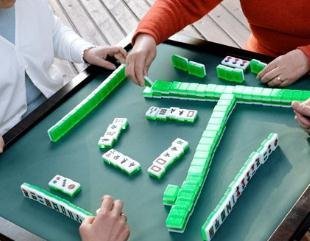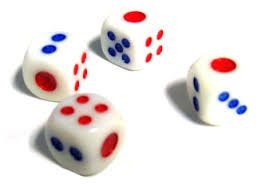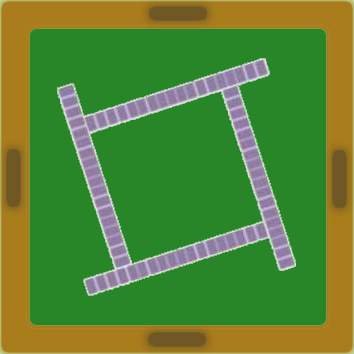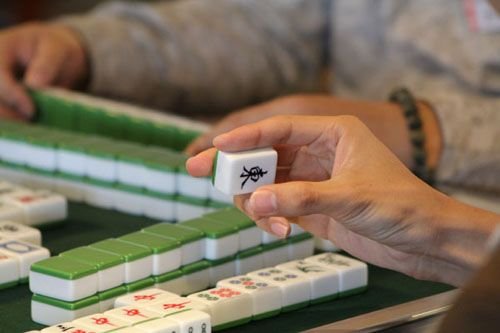Welcome to the world of mahjong! 歡迎來到麻雀教室!
Nice to see you! In this series, I'm gonna share with you how to play mahjong and my experience in playing mahjong! Mahjong (麻雀 or 麻將 in Chinese) was originated in China. The history of mahjong can be traced back to the 18th century. In Asia, there are several kinds of mahjong, including Hong Kong style, Cantonese style, Taiwanese style and so on. I am not familiar with all kinds of mahjong and I will focus on Hong Kong mahjong since I have been playing it since I was in my childhood and the rules of Hong Kong mahjong are relatively less complicated. This series is written bilingually in Chinese and English so that friends from all over the world can involve in discussion. I will try my very best to ensure the information is accurate but if I write something wrong, please let me know : )
大家好! 在這個系列的文章,我會分享一些打麻雀的玩法跟一些個人心得。麻雀是來自中國的牌類消閑遊戲,最早可以追朔到十八世紀。麻雀有不同種類,例如香港牌、廣東牌及台灣牌等等。小編並不熟悉每種麻雀的規則。由於我從小就打香港麻雀而且香港麻雀的規則相對簡單,所以我會集中撰寫香港麻將的玩法。這個系列會以中英對照編寫,讓不同語言的朋友都可以一起討論。小編會盡所能確保資訊準確。若各位發現其中一些資料有誤,請告訴我讓我儘快更正 : )
Why mahjong? Not because I am an expert in mahjong, but mostly because playing mahjong is a deep-rooted cultural activity of many Chinese. In my opinion, the popularity of mahjong is comparable to that of poker in the west. Not only is mahjong a great game during leisure time, it is highly related to the deep Chinese culture. There are seemingly very few articles about mahjong and that's why I want to share this awesome game to friends from all over the world!
為何我會寫麻雀的文章? 並非因為我是麻雀高手,而是由於打麻雀是一個源遠流長的中國文化活動。在我而言,麻雀的受歡迎程度並不遜色於撲克在西方的地位。打麻雀不只是一個消閑活動,更蘊含著深遠的中華文化。Steem好像近乎沒有關於麻雀的文章,所以小編希望透過這系列的文章向世界各地的朋友介紹這個超好玩的娛樂活動!
(Image: http://www.chinadaily.com.cn/zgrbjx/2011-11/24/content_14165636.htm)
The Fundamentals 麻雀基本
Mahjong is composed of tiles. Hong Kong-style mahjong consists of 144 tiles, including 36 dot tiles, 36 bamboo tiles, 36 character tiles, 28 honors tiles and 8 flower tiles.
麻雀由「牌」組成。香港麻雀一共有144張牌,當中包括36張筒子、36張索子、36張萬子、28張字牌及8張花牌。

(Image: http://www.twwiki.com/wiki/%E5%9C%8B%E6%A8%99%E9%BA%BB%E5%B0%87)
There are 4 players in a game of mahjong, each seating at each side of a square table. The seats are named "East", "South", "West" and "North". The seating arrangement is not arbitrary and does matter. We will get back to the seating arrangement later.
麻雀成局需要有不多不少剛好4位玩家。每位玩家會各坐在正方枱的一邊,稱作「東位」、「南位」、「西位」及「北位」。要注意編排座位並非隨玩家的喜好或是隨機編排的。我們之後會再仔細討論。

(Image: http://www.betonhat.com/zazhi/xiuxian/38/38459.html)
Apart from the 144 tiles, there are also three 6-faced dice for the seating arrangement and drawing tiles at the start of each game.
香港麻雀除了有144張牌之外,亦有3顆6面骰子。骰子是用於剛開始時安排座位以及在每一局開局時決定如何抽牌。

(Image: http://mahjong.wikidot.com/equipment:dice)
Before the start of each game, all the players have to shuffle the tiles (known as "Sai Paai") and each has to stack the tiles (known as "Dap Paai"), with 18 tiles at bottom and 18 tiles on top, to form a square (see the picture below). 3 of the players will draw 13 tiles from the stacks according to some order and the remaining one, known as the "zong" (莊), will draw 14 tiles. The zong will start by throwing a tile inside the square formed by the stacks. Then each player, in anticlockwise order, first draws a tile and again throws a tile. There are some special operations apart from drawing and throwing and we will talk about them later.
每局開始前四位玩家需要先「洗牌」(即弄亂枱面上的牌),然後以18張牌作底、18張牌作面「疊牌」,並推至中間作一個正方形 (可參考下圖)。除了「莊」一開始抽14張牌外,其餘玩家均按特定方法抽13張牌。每局會由莊先開始。莊會放置一張牌於正中間 (廣東話稱作「打牌」),接著每位玩家按逆時針的次序先抽牌 (廣東話稱作「摸牌」)後打牌。而打牌和摸牌之外亦有其他動作可以執行,在稍後會再作討論。
Illustration of stacking tiles 疊牌示意圖

(Image: http://www.geocities.ws/jackysinck/gbe0010lecture2.html)
Playing mahjong will last for, usually, a minimum of 4 rounds. The first, second, third and fourth rounds are known as "East round", "South round", "West round" and "North round" respectively. Each round consists of 4 games and the games are also named "East game", "South game", "West game" and "North game" accordingly. A game ends when a player "sik wu" (i.e. when the tiles at hand have certain orders and patterns) or the game draws (i.e. all the tiles are drawn). If you think 4 rounds are not enough, you can also play 8 rounds or 16 rounds (or any multiple of 4 if you have the energy). Feel confused with the terms? Don't worry! Everything will be alright when I talk about the general flow of the game in the next post.
在香港麻雀中每四局稱一圈。第一、二、三及四圈分別稱作「東圈」、「南圍」、「西圈」及「北圈」。每圈有「東局」、「南局」、「西局」及「北局」總共四局。「圈」有時亦作「風」,但小編比較愛用「圈」一字。當有人「糊」(即手上的牌達致一個特定的組合,廣東話稱作「食糊」)或枱面已沒有牌可抽 (亦即「和局」),該局會立刻完結。一般而言打麻雀至少會玩四圈。但如果你不能抽身,亦可打八圈、十六圈或更多 (前提是你有足夠體力: D),而圈數通常都是四的倍數。各位現在可能會一頭霧水,但在下篇文章深入談及整個流程的時候就會很容易理解。
Types of tiles 牌的種類
Before we discuss in detail the different types of tiles, I highly recommend you to learn some Chinese words and the corresponding pronunciation, which I summarize in the next section. For friends who do not know Chinese, it's a good chance for your to feel the beauty of Chinese words!
在開始講述各類牌之前,小編強烈建議會中文的朋友們可以學習一下麻雀中廣東話的發音,可以讓大家在打香港麻雀的時候能夠更投入!
Now let's move on to talk about dots, bamboos and characters! Each of the dots, bamboos and characters tiles has 9 different types, numbered 1 to 9. Take bamboos as an example. There are bamboo 1, bamboo 2 up to bamboo 9. The same applies to dots and characters. Each numbered tile has 4 identical copies. This is why there are 9 x 4 = 36 dots, 36 bamboos and 36 characters. Make sure that you can recognize all the different types of tiles. It's tough at first but you will naturally be able to call the name of each tile as you play more!
讓我們先看看何謂筒子、索子以及萬子 (簡稱「筒索萬」)! 我想很多朋友也知道,筒索萬各有9種牌。以索子為例,有一索、二索到九索。同樣地我們有一萬/筒、二萬/筒到九萬/筒。在香港麻雀中每種數字牌均有4張一樣的牌。因此我們可以推算出總共有9乘4=36張筒子、36張索子及36張萬子。切記必須要記得所有牌的種類。對於會中文的各位應該不是難事!
(All images of tiles below come from 以下圖源來自: http://www.iaweg.com/kantu/f1wzplksss/60.html)
Bamboos 索子
Bamboos, or "Sok Zi" in Cantonese, can be easily recognized by the "sticks" on the tiles. For instance, there are 2 sticks on the tile of bamboo 2 and 9 sticks on that of bamboo 9. What's more special is bamboo 1, which looks like a sparrow (with a Cantonese pronunciation similar to "mahjong"!).
索子,亦稱條子,特徵是牌上的條狀圖案。譬如二索有兩個條狀圖案,而九索則由九個條狀圖案組成。其中比較特別的只有像麻雀的一索。

Bamboo 1 to Bamboo 9 (from left to right) 一索到九索(由左至右)
Dots 筒子
Dots, or "Tung Zi" in Cantonese, are characterized by the "circles" on the tiles. In my opinion, dots is the most easily recognized type of tiles.
筒子的特徵是牌上的圓圈。在小編而言這是最容易認得的牌類。

Dot 1 to Dot 9 (from left to right) 一筒到九筒(由左至右)
Characters 萬子
Characters, or "Maan Zi" in Cantonese, are very hard for readers who don't know Chinese. But don't worry! I will explain it in details. Take a look at the picture below. Each character tile is comprised of 2 separate Chinese words. The upper word represents the number. For example, "一" means "one", "四" means "four" and "九" means "nine". On the other hand, the lower word "萬" represents ten thousand. So basically "一萬", "四萬" and "九萬" mean 10,000, 40,000 and 90,000 respectively. The next section will review all the Chinese terminology in this article, together with the corresponding pronunciations for friends who want to learn the lovely Chinese : )
這個我想不用多說吧 : D

Character 1 to Character 9 (from left to right) 一萬到九萬(由左至右)
Now let's take a look at honors and flowers tiles! Similar to bamboos, dots and characters, there are 4 copies of each of the 7 types of honor tiles, constituting to a total of 7*4 = 28 honor tiles. On the other hand, there are 8 different flower tiles with no duplication.
現在我們一起看看番子跟花牌吧! 跟筒索萬一樣,每種番子均有4張重複的牌,因此一共有7乘以4 = 28張番子。另外花牌則有8種而且沒有重複。
Honors 番子
Another Chinese lesson! Each honor tile corresponds to a single Chinese word (except the tile "White"). Let's take a look at the picture below. "東" (Dung), "南" (Naam), "西" (Sai) and "北" (Bak) refer to east, south, west and north respectively. "中" (Zung) and "發" (Faat) are hard to be interpreted when they are not combined with other Chinese words. Following the conventional English translation, I will call them as "red" and "green" respectively based on the colors of the tiles. Note in particular that "中" and "發" do not actually mean "red" and "green" in Chinese. The rightmost tile in the picture is called "white" in English or "白板" (Baak Baan). Unlike "中" and "發", "白" in Chinese exactly means white when not combined with other Chinese words.
除了下圖最右的牌稱為「白板」外,其餘六張我想也不用多說了。

East, South, West, North, Red, Green and White (from left to right) 東南西北中發白(由左至右)
Flowers 花牌
The flowers tiles are the hardest ones to explain. The functions of flowers tiles are very different from dots, bamboos, characters and honors because flowers are not actually in the tiles at players' hands. I will leave the discussion of flower tiles in the next post when I talk about the actual gameplay. Now, let me hold another Chinese lesson first! For the 4 tiles in the left, the four Chinese words "梅" (Mui), "蘭" (Laan), "菊" (Guk) and "竹" (Zuk) refer to plum, orchid, chrysanthemum and bamboo respectively. The 4 tiles in the right, namely "春" (Ceon), "夏" (Haa), "秋" (Cau) and "冬" (Dung) mean spring, summer, autumn and winter respectively. There are a lot to talk about regarding the Chinese culture behind these flower tiles. But at present, let us just try recognizing these 8 tiles.
花牌有「梅蘭菊竹」及「春夏秋冬」兩類。與筒索萬及番子不同的地方,在於花牌並不會實際在手牌中出現。此話的意思會在下篇文章談及麻雀的實戰時會詳盡解釋。現在我們只需記得這八款花牌就足夠了。各位會中文的朋友我想也必知道「梅蘭菊竹」及「春夏秋冬」跟文化象徵及二十四節氣的一些關係。由於小編文化修養不足,在這就不獻醜了。

Plum, orchid, chrysanthemum, bamboo, spring, summer, autumn and winter (from left to right) 梅蘭菊竹春夏秋冬(由左至右)
Review of Terminology 麻雀術語回顧
We will stop here. Let's review all the terminology we've encountered! To listen to the Cantonese pronunciation, I suggest visiting the site http://www.yueyv.cn/. Simply follow the instructions in the picture below to see how the web works.
這回就到此為止。讓我們看看用過的麻雀術語吧! 如果想聽聽各術語的廣東話發音,可以到任何一個粵語發音字典查詢,例如http://www.yueyv.cn/。

| Chinese | English meaning | Cantonese pronunciation |
|---|---|---|
| 洗牌 | Shuffle the tiles | sai2 paai4 |
| 疊牌 | Stack the tiles | dip6 paai4 or dap6 paai4 |
| 筒子 | Dots tiles | tung4 zi2 |
| 索子 | Bamboos tiles | sok3 zi2 |
| 萬子 | Characters tiles | maan6 zi2 |
| 番子 | Honors tiles | faan1 zi2 |
| 花牌 | Flowers tiles | faa1 paai4 |
The following is for readers who want to know more about Chinese!
下表是為想學習中文的朋友而設!
| Chinese | English meaning | Cantonese pronunciation |
|---|---|---|
| 一 | One | jat1 |
| 二 | Two | ji6 |
| 三 | Three | saam1 |
| 四 | Four | sei3 |
| 五 | Five | ng5 |
| 六 | Six | luk6 |
| 七 | Seven | cat1 |
| 八 | Eight | baat3 |
| 九 | Nine | gau2 |
| 東 | East | dung1 |
| 南 | South | naam4 |
| 西 | West | sai1 |
| 北 | North | bak1 |
| 中 | / | zung1 |
| 發 | / | faat3 |
| 白 | White | baak6 |
| 梅 | Plum | mui4 |
| 蘭 | Orchid | laan4 |
| 菊 | Chrysanthemum | guk1 |
| 竹 | Bamboo | zuk1 |
| 春 | Spring | ceon1 |
| 夏 | Summer | haa6 |
| 秋 | Autumn | cau1 |
| 冬 | Winter | dung1 |
What's coming next! 下回預告
In the next Steem post, I will talk about the actual gameplay of Hong Kong mahjong, including the seating arrangement, functions of different tiles, the detailed flow in a mahjong game as well as operations (e.g. Pong, Sheung and Gong) other than throwing and drawing tiles. Thank you for your support and I hope you have had a great time. See you!
在下篇Steem文章,小編會詳盡介紹香港麻雀的實戰,包括選擇座位 (廣東話稱「執位」)、各種牌的作用、打麻雀的整個流程以及除打牌及摸牌以外「碰」、「上」、「槓」等玩家可以執行的動作。感謝各位朋友的支持 : D 再見!
I write articles on machine learning, applied statistics and economics to the best of my knowledge : ) If you like my posts, please upvote, resteem and follow me @manfredcml.
小弟在Steem的時間不長,希望認識各位CN區的朋友! 如果喜歡小弟的文章,可以upvote及follow @manfredcml支持一下: D
English articles 英語文章:
Be a smart gambler! #1 - Gambler's fallacy
Let's play a game #1 - Prisoner's Dilemma
Paradox is fun! #1 - Boy or Girl?
No solution! #1 - Prime numbers
Everyday Tech Series
Bilingual articles 雙語文章:
In preparation... (準備中...)

So much efforts in this post! I'm a fan of mahjong and i found this quite well written, in the way that should be easily understood by complete beginners in mahjong. A great game that's probably too undervalued outside asia, hope it'd get more promoted to the other places in the world!
Thanks for your support! It's really a hard time translating mahjong terms into English paragraphs but as I was writing this post, I realized that it was quite an interesting work! Apart from mahjong there are also other kinds of less well-known entertainment from China and if the time is right i can write more on those as well : )
Yeah definitely agree its very hard task, particularly those jargons in mahjongs. I would love to hear more about the less known entertainment in china, look forward to your next post on it! Do expect you need quite some time to work on it, take your time :)
this post is really detailed! please continue to write more interesting articles like this one.
不錯嘛,這樣外國人也能了解一下
對呀, 好像steem很少這類的文章
历害,这么详细
謝謝支持 : D